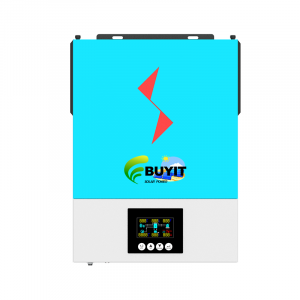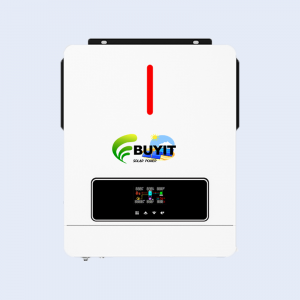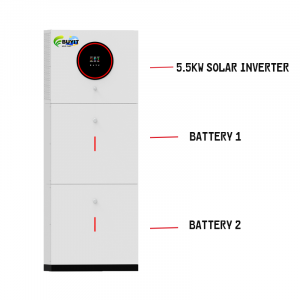
Inverter leakage, photovoltaic power station power generation “paralyzed”?

Owners and maintenance experts of photovoltaic power stations, are you often troubled by the “leakage fault” of the inverter? Especially in the humid rainy season, once the alarm message sounds, the power generation will stop directly, and the loss is real money!
Today, let’s thoroughly understand the “culprit” of inverter leakage, and teach you how to quickly solve the problem. It is full of practical information, and it is recommended to save it!
01
The causes of leakage: environment, system, equipment!
Inverter leakage is no small matter. It can cause shutdown and affect power generation, or even threaten personal safety.
Combining front-line operation and maintenance experience and authoritative technical reports, leakage causes are mainly divided into three categories:
- Environmental factors: humid weather is the “number one killer” High humidity environment: on rainy days and in the early morning when there is heavy dew, the surface of photovoltaic modules and the insulation layer of cables are easily damp, forming a leakage current loop. Large-capacity power station components are laid over a wide area, and the cumulative effect of leakage current is more obvious, which may directly trigger protection. Temperature fluctuations: Extremely high or low temperatures can accelerate material aging and reduce insulation performance, especially poor-quality cables and connectors are prone to damage and leakage.
- System problems: Improper installation buries hidden dangers Cable damage: DC cables are gnawed by mice, brackets are rubbed or cracked due to aging, and the positive and negative insulation layers are damaged and directly short-circuited with the grounding bracket.
Poor grounding: The grounding screws of the metal frame of the component are loose and rusted, or the resistance of the grounding wire is too large, resulting in potential difference accumulation and leakage. Poor quality materials: DC connectors with low waterproof levels and poor sealing of component junction boxes cause leakage after rainwater seeps in. - Inverter faults: Improper settings or component damage Leakage protection threshold is too low:
The default protection value of some inverters is 30mA, but it is easy to trigger by mistake in humid areas and needs to be adjusted according to the site. Sensor failure: Abnormal leakage current detection module (such as sampling deviation) may cause false alarms. Internal circuit problems: Aging of components such as relays and capacitors, or poor heat dissipation leads to reduced insulation performance.
02
Emergency treatment: quickly restore power generation, safety first! Don’t panic when you encounter a leakage alarm! Follow the steps below to solve the problem in as little as 30 minutes:
Immediately cut off the power, safety first
Disconnect the DC side switch and AC side circuit breaker of the inverter to prevent leakage from expanding. Wear insulating gloves and rubber shoes to ensure safe operation.
Check in sections and locate the fault point. Check the DC side: Use a multimeter to measure the voltage of each string to the ground. The string with abnormal voltage is the source of the fault.
Check the AC side: Check whether the grid voltage and frequency are stable, and eliminate the interference of grid fluctuations.
“Precision strike” cables and connectors in key areas: Observe with the naked eye for damage and burn marks; use a megohmmeter to detect insulation resistance (normal value > 50kΩ).
Grounding system: Use a ground resistance tester to measure the grounding resistance of the component frame, which is required to be ≤4Ω.
Component edge: Check whether there are black spots (burn marks) or deformation of the frame causing internal short circuit.
Temporary treatment and long-term repair Emergency recovery: If triggered by humidity, the inverter protection threshold can be adjusted (such as from 30mA to 100mA), but follow-up is required.
Thorough repair: Replace damaged cables, tighten grounding wires, install waterproof boxes, and contact the manufacturer to replace faulty components if necessary. Re-power verification Close the switches step by step, observe the operating status of the inverter, and confirm that there is no continuous leakage alarm.
03
If you pay attention to these details, the probability of leakage will be reduced by 90%! It is better to prevent it in advance than to remedy it afterwards! Three core measures can help you avoid the trouble of leakage:
- Strictly control the quality of equipment. Select DC connectors and inverters with IP65 protection level or above, and reject low-priced and low-quality components. Give priority to inverters with “leakage current active suppression technology” (such as coupled inductor design) to reduce leakage from the source.
- Install and maintain standardized cable protection: DC cables are passed through corrugated tubes to avoid direct exposure or friction with metal brackets. Grounding specifications: The component frame, bracket, and inverter housing must be independently grounded, and the grounding wire diameter must be ≥4mm². Regular inspections: Before the rainy season, focus on checking the insulation resistance and joint sealing, and replace aging parts in time.
- Intelligent monitoring support. View the leakage current value in real time through the inverter monitoring platform, and automatically warn when abnormal fluctuations occur. Use infrared thermal imagers to scan regularly to detect local overheating hazards in advance.
04
Conclusion
Photovoltaic power stations are “three parts construction and seven parts maintenance”. The leakage problem seems complicated, but as long as you understand the principle and standardize the operation, you can easily deal with it! If you have other practical experience or difficult cases, please leave a message in the comment area to share or follow BUYIT and add what’s APP: 008613808405352



